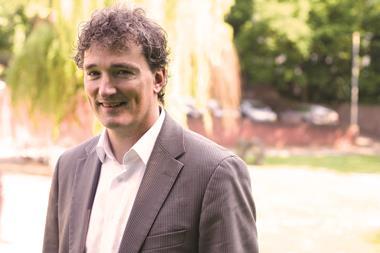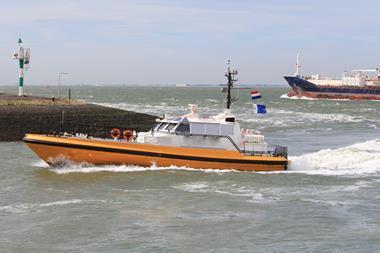The Netherlands has always been fertile soil for the growth of alternative asset classes. Dutch pension funds have a long tradition of private equity investment and are now among the leaders in Continental Europe their use of hedge funds.
Industry leaders, like ABP and PGGM, have led the way. These funds are large enough to be able to use their considerable assets under management as a test bed for hedge fund investment, either through their own funds of hedge funds or directly.
Other large pension funds have also moved into hedge fund investment, notably manager of industry wide plans Mn Services and leading corporates Shell and Heineken. Until now, however, the mid-sized funds, with assets under management of less than €1bn assets, have shown less interest. Even where there is interest, progress has been slow. Asset managers complain that although there has been plenty of discussion, this has not been followed up by mandates.
But at the end of last year the picture began to change. SPF TNO, the Delft-based €1.3bn pension fund of the Dutch scientific and technical consultancy firm TNO, appointed two funds of hedge fund managers, Pacific Alternative Asset Management Company (PAAMCO) and EIM to manage a multi-strategy, fund of hedge funds portfolio.
Eric van Ballegooijen, director of SPF TNO, says the move into hedge funds was prompted by the belief that pension funds must be liability-driven rather than benchmark-driven: “Our interest in hedge funds stems from a further diversification of the equity portfolio, by means of investments with low correlation with the listed markets and an interest in absolute return strategies. The first reason contributes to a lower risk profile and the second reason is more fundamental, since the pension industry is in fact an absolute return business given its liabilities. It cannot be driven by beating benchmarks.”
SPF TNO’s initiative is seen as a harbinger of further initiatives in the mid-sized pension fund market this year. Stephen Oxley, a former consultant with Watson Wyatt and now managing director of PAAMCO in London says: “Hitherto, it has been mainly the very large pension funds in the Netherlands which have made allocations to funds of hedge funds; SPF TNO is one of the first mid-sized institutions to do so.”
This could be the start of a significant trend, he says. “You need to be careful not to overstate the level of interest but there are a number of pension funds in Holland now that are looking into diversifying into absolute return hedge funds and they are generally doing it by going for a multi-strategy diversification strategy using a fund of funds group.
Oxley suggests that interest in hedge funds has been stimulated by the prospect of new accounting standards in the Netherlands next year, which will directly affect a corporate pension fund’s balance sheet. “This is leading to a search for alternatives to equity – not to replace equity totally but to diversify the equity exposure,” he says.
Most medium-sized pension funds will take the fund of hedge funds route, he believes. “This relieves them of the difficulty of appointing individual managers, Arguably you need to be a certain size to take on the work involved in due diligence and monitoring of a portfolio of hedge funds And you need to be investing something like €500m before it becomes cost effective to try to set up your own internal fund of funds.”
The decision by a pension fund to invest in hedge funds is inevitably a lengthy process, which can take several years, says Oxley. “Many institutions are stumbling at the implementation phase. The choices are not just between fund of funds and direct investment. There are passive index funds to consider and single manager multi-strategy approaches Then there are issues of monitoring – what targets do you set and how do you judge success or failure?”
One reason for the slow take-up by pension funds has been the difficulty of fitting hedge funds into an asset liability model (ALM). Jurcell Virginia, head of the Alternative Investments Company an Amsterdam, a consultancy specialising in hedge funds and private equity, says this has been a serious obstacle in the past.
“There was a particular problem because many of the ALM studies could take only asset classes that have a minimum of 13 years
history as an asset class. That illustrates why it was quite
difficult to have hedge funds in these studies.
A more general problem however was how to define a hedge fund as an asset class in order to place it within an ALM. “Pension funds are bound in terms of their investment policy to their ALM study. So before they can even look at the hedge fund asset class they face the challenge of defining hedge funds as an asset class within that ALM study. Until last year you had a very limited number of medium or smaller sized pension funds having hedge funds defined as an asset class within ALM studies.
One of the problems pension funds and their consultants face is deciding where hedge funds belong within the traditional asset classes in their portfolios, says Virginia. “Some pension funds will place it in their fixed income. Others will place it in equities; while others have an allocation to anything they call absolute returns. The bigger funds say that if you go for particular styles then you can place it in the tactical allocation part of a certain traditional asset class.”
The starting point should be to define the levels of risk of different hedge fund strategies, he says. His own approach is to present pension fund clients with a one dimensional risk axis and then plot alternative investments against this axis. “If you decompose hedge funds by style, you will find the arbitrage strategies that have low leverage are on the low risk side of the axis. In the middle of the risk axis you have global macro, some of the directional strategies that have a natural hedge, global macro, and long-short. On the riskiest part of the axis are short sellers, emerging market long-short, certain distressed strategies and certain private equity such as MBOs and LBOs.”
Virginia classifies private equity as a form of distressed debt . This underlines one of the paradoxes of Dutch pension funds - that while they may be reluctant to invest in hedge funds they are relaxed about the other main alternative investment asset class - private equity.












No comments yet